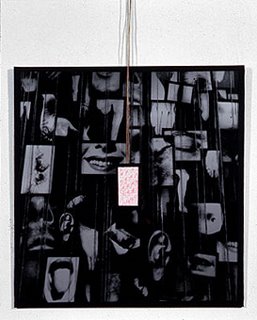Postmodernism. (
It's my cultural context)
Postmodernism is a rather general term but a useful one for describing and referring to a broad range of cultural and critical movements and ideas that have, and are, influencing contemporary society and visual art since the '70's.
In stark contrast to modernism, Postmodernism is strongly associated with pluralism; the past, present and future are considered from a variety of viewpoints. Consequently, previously accepted ideas, existing knowledge, social and cultural structures are challenged and questioned. Many of the ideas currently associated with postmodernism have been developed by cultural theorists and particularly those associated with Marxism, feminism and psychoanalytic theory. (
My work and research for this project will stem from Freud's psychoanalytic ideas on the uncanny as well as later contributors to this theory such as Jentsch and Lacan.)
Other postmodern tendencies have been fuelled by concerns about issues such as war, the environment, globalization, power, consumerism, sexism and racism. As a consequence there is often anxiety, uncertainty and a fear of the future. (
I believe that this is where the uncanny, disquieting or unsettling aesthetic in so much contemporary art (and drawing) stems from.)
Postmodern Art.
The pluralistic nature of postmodern art means that it takes many different forms and explores wide-ranging themes and ideas. Much of this art includes themes, ideas, materials, and forms which challenge accepted traditions in our western culture and society. As a result postmodern art has helped to break down and blur the boundaries between medias, styles, cultural origins and has encouraged positive attitudes to diversity; embracing many forms of artistic expression not previously valued in the west. Many contemporary artists influenced by postmodernism create work that draws attention to the constructed nature of visual imagery and the values and ideas they communicate. This frequently involves using strategies that actively encourage the viewer to find multiple,conflicting or alternative meanings in the work. This is often achieved by appropriation, re-working images or creating layered and fragmented images. (
I intend to consciously include and explore these postmodern facets in my own work for this project, all the while seeking to create 'the uncanny'; which is, of course, a highly subjective response. However, there are particular elements and occasions when uncanny responses are more likely to be elicited. More on this in my next posting.)
There is no work yet. I am researching and I have been reading;
Introducing Postmodernism.
Beginning Postmodernism.
Interpretive Frameworks for Contemporary Art.

